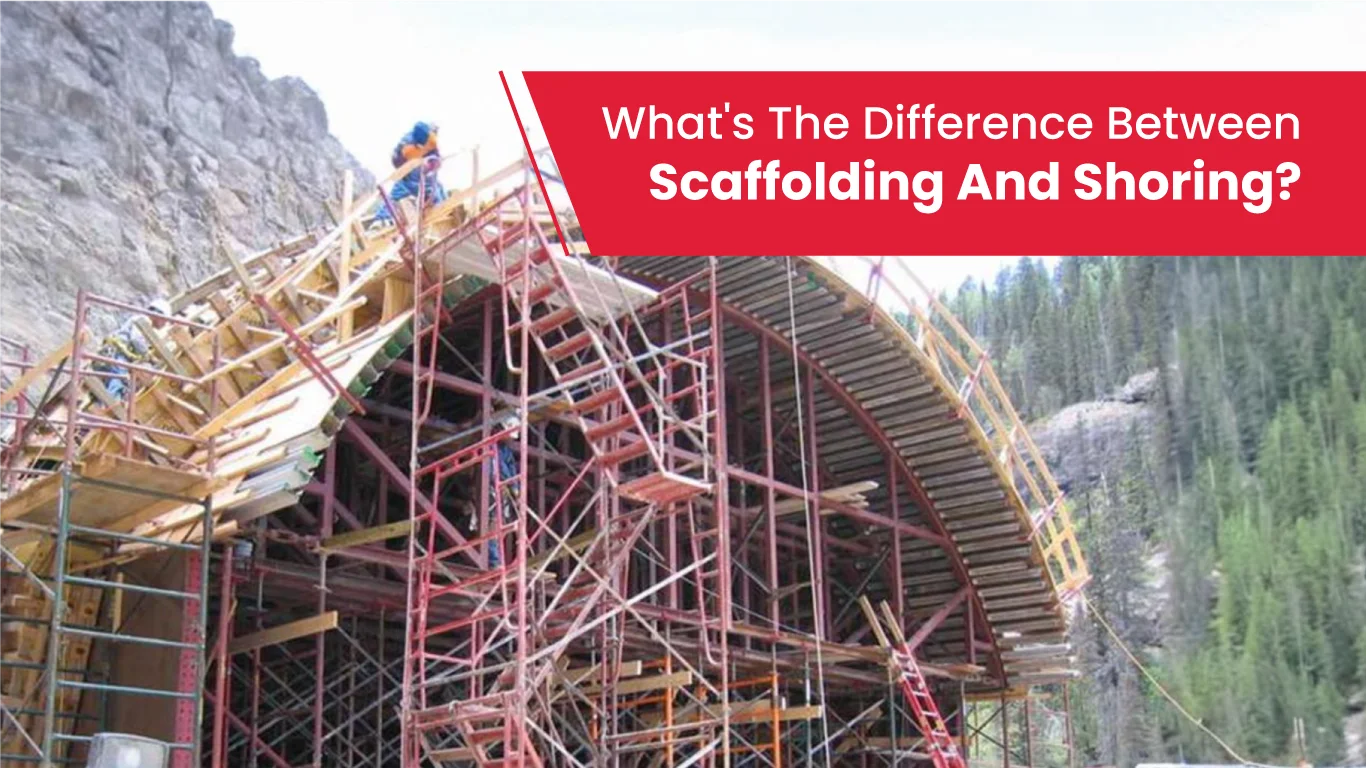In the construction industry, scaffolding and shoring are the different systems that ensure safety during various phases. Even when both support construction activities, they serve distinct purposes. But, you must know the difference between shoring vs scaffolding. So, to drive away the confusion, read this article to know more about the structures.
What does one mean by Scaffolding and Shoring?
In simple terms, scaffolding is a temporary structure that offers workers support to reach heights. While these create a stable platform, it enables workers to perform tasks efficiently. Individuals can also move ahead complex structures smoothly with the structure. In contrast, the main purpose of shoring is quite different.
As workers use shoring, it provides support for unstable structures. This ensures stability and supports loads that are beyond the capacity. Once set up, shoring maintains the structure’s integrity and enables people to carry out tasks efficiently. Eventually, shoring reinforces areas like foundations or walls.
What is the primary purpose of both the structures?
Now, there’s an easy way to understand the difference between shoring vs scaffolding. If the main purpose of using a platform is to stand and carry out tasks, then it’s a scaffold. But, if the formwork supports the existing structure, then it is referred to as shoring. The applications of the structures will help you understand the difference better.
For instance, if the scaffolding is used in the refinery industry, then workers can access heat exchangers, pressure vessels and more with ease. Scaffolds are also erected in the petrochemical industry for accessing hard-to-reach points in the facilities.
When shoring is used in the construction domain, it can offer the requisite support when the building is undergoing renovation. Individuals can then work on tasks to improve certain sections. Shoring can also serve as a temporary structure when a stage has to be built for an event.
Although both the temporary structures serve a certain intention, a scaffolding component can be a shoring component. On the contrary, workers may use the shoring frame as a scaffold component. They may also use a shoring tower temporarily while building a shoring system.
Which scaffolding is commonly used at sites?
While builders are looking for temporary support for the project, here are some types of scaffolding they might use.
Double Scaffolding
Such scaffolds are known as independent scaffolding. While erecting this scaffold, metallic pipes are used to connect two rows of poles. This structure is useful in stone masonry because it’s tough to drill holes in stone walls.
Cantilever scaffolding
This scaffolding is generally used when it’s not practically possible to place supports. Hence, during its installation, workers support it from one end and let the other end extend over a space. Moreover, these scaffolds are used during bridge constructions, and while maintaining the building’s facade.
Suspended scaffolding
Suspended scaffolding is yet another temporary support that hangs from a building. Such a kind of scaffold is used when workers can’t reach areas with ease. On the other hand, workers may use this scaffold when ground-based supports are not practical to set up.
Trestle scaffolding
This type of temporary support offers mobility for workers from one place to another. As these are used indoors, the tripods or movable ladders offer support. Hence, people install trestle scaffolding when they have to perform maintenance tasks.
Apart from the ones stated above, you will also come across steel scaffolding because they are strong. Contractors may also pre-assemble scaffolding when there’s less time to complete the project. Feel free to connect with a leading scaffolding equipment supplier to figure out the best scaffold.
Which shoring is commonly used at sites?
At a construction site, you may come across many shoring techniques. Let’s go through the types of shoring.
H-frame shoring
H-frame shoring consists of vertical and horizontal members forming a frame that is placed against a structure to provide support. It is commonly used in trenching and excavation to prevent the sides from collapsing. When steel I or H beams are placed firmly in the ground, workers spend time drilling them. They then support the piles once they are drilled.
Secant pile shoring
When workers consider this shoring, they form a wall. This is useful, especially when there’s insufficient space for the open excavation. While the individuals are busy, they use primary and secondary piles. They may also be involved in installing overlapping reinforced concrete piles. This creates a continuous wall to support the entire evacuation.
Contiguous pile shoring
When water seepage is not a concern, this kind of shoring is considered. In this technique, the piles are usually placed one after the other. As a result, a continuous wall is formed around the area. Apart from offering stability, the shoring prevents soil collapse during evacuation.
Sheet pile shoring
Just like H-beam shoring, sheet pile shoring has many steel beams for support. While workers start setting up the beams, they use a vibro hammer. The technique is generally employed in areas with soft soils. You will certainly come across this shoring in deep evacuations, and trenching projects.
Diaphragm walls
Under such kinds of shoring systems in construction, workers use concrete walls meant for deeper excavations. This involves the construction of tunnels, basements, and more. Moreover, the walls are formed by setting up panels one after another. The interlocking of panels offers structural stability during the construction phases.
Can scaffolding also be used as a shoring solution?
Although shoring differs from scaffolding, people use scaffolding in some cases. The structure is used instead of shoring. Individuals may use scaffolding when support is needed for structural repairs. The overall structure can also be used to support vertical elements that may collapse. In addition, scaffolding can be used to support floor slabs or add a new level.
FAQs
1. What is the difference between shoring and scaffolding?
Scaffolding always differs from shoring. While a scaffold offers access to different heights, shoring offers support for unsafe structures.
2. Can scaffolding be used as shoring?
Scaffolding can be used as shoring in some cases. But, the main difference between the two lies in configuration, purpose and the design.
3. What are the 3 types of scaffolding?
Supported, aerial and suspended scaffolding are most commonly erected at construction sites. But, such types are used for diverse purposes. But, to use a suitable scaffold, you must know more about them.
4. What is the difference between shoring and formwork?
When the construction work needs support, a formwork is erected. But, in case unsafe structures have to be supported, then shoring is established.
5. What is shoring in construction?
As workers proceed with the construction tasks, they need to support a trench, building or a structure. This technique is called shoring and it prevents the structure from collapsing.
Conclusion
Finally, you must approach a scaffolding equipment supplier if you wish to set up a scaffold. At AAIT Scaffold, we can offer scaffolding accessories and numerous equipment. While we serve our clients to meet their diverse needs, we assure utmost quality. With efficient logistics, we also make sure that the components are delivered within a time span in Medley and Houston.












 Download
Download
Comments are closed